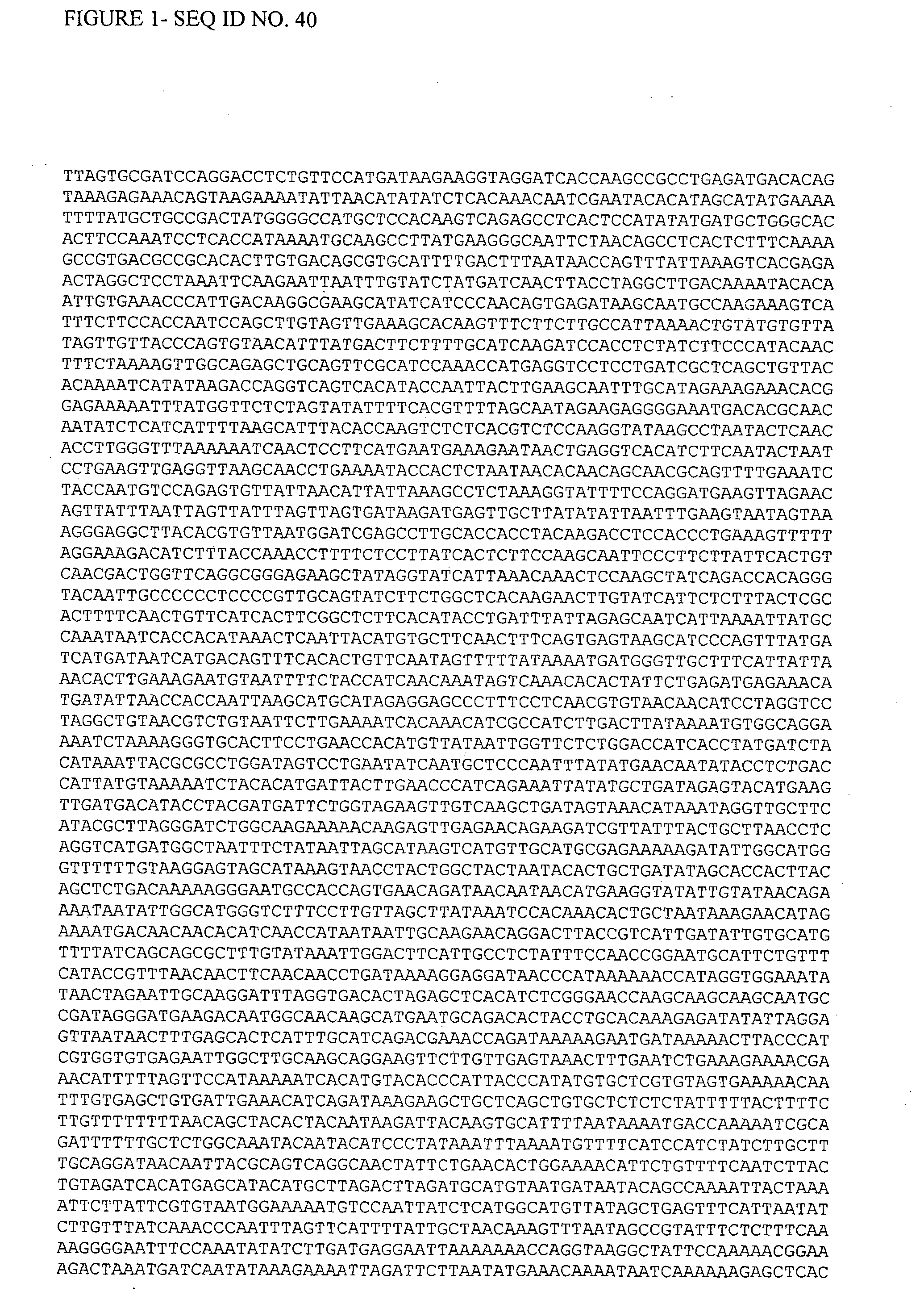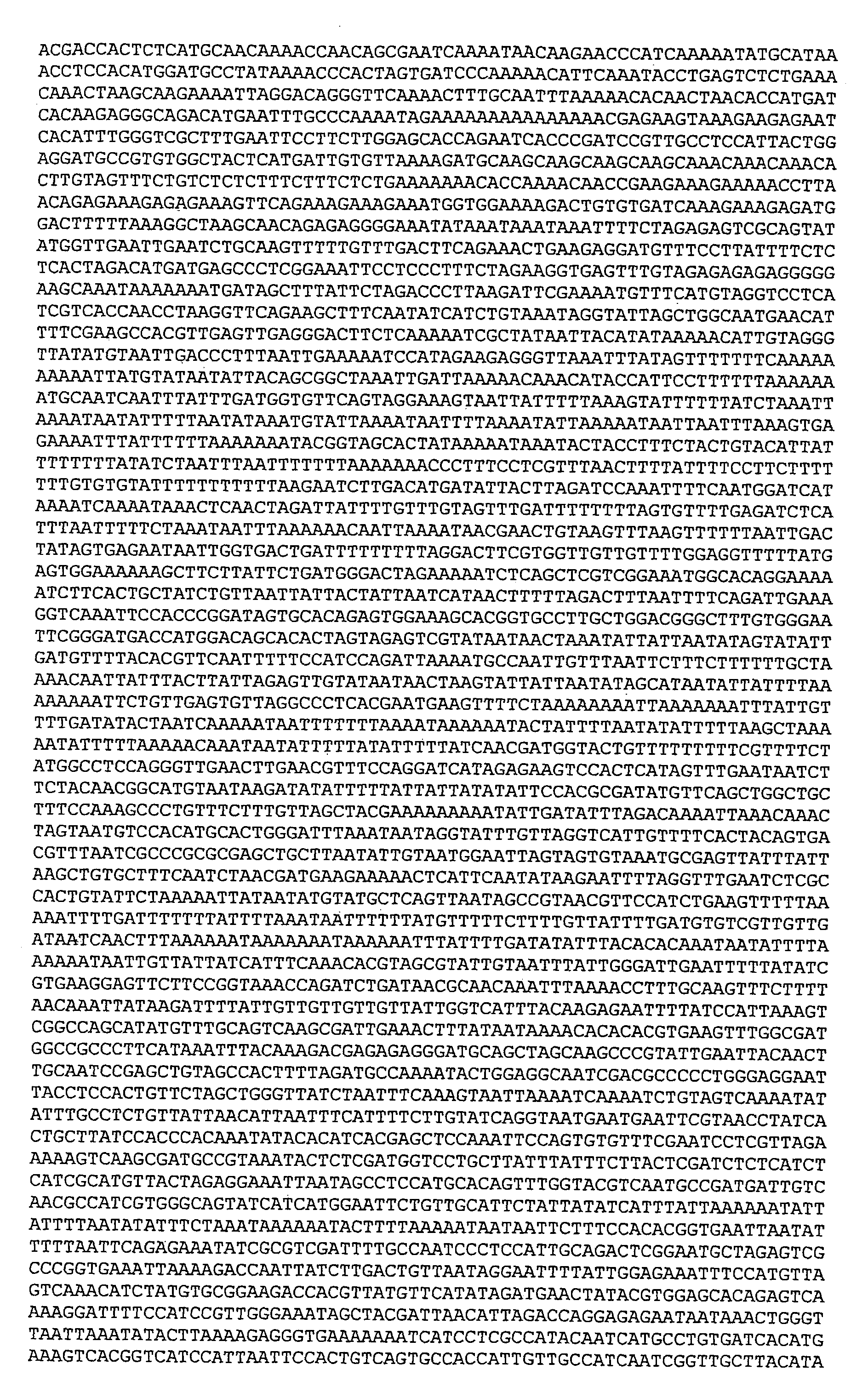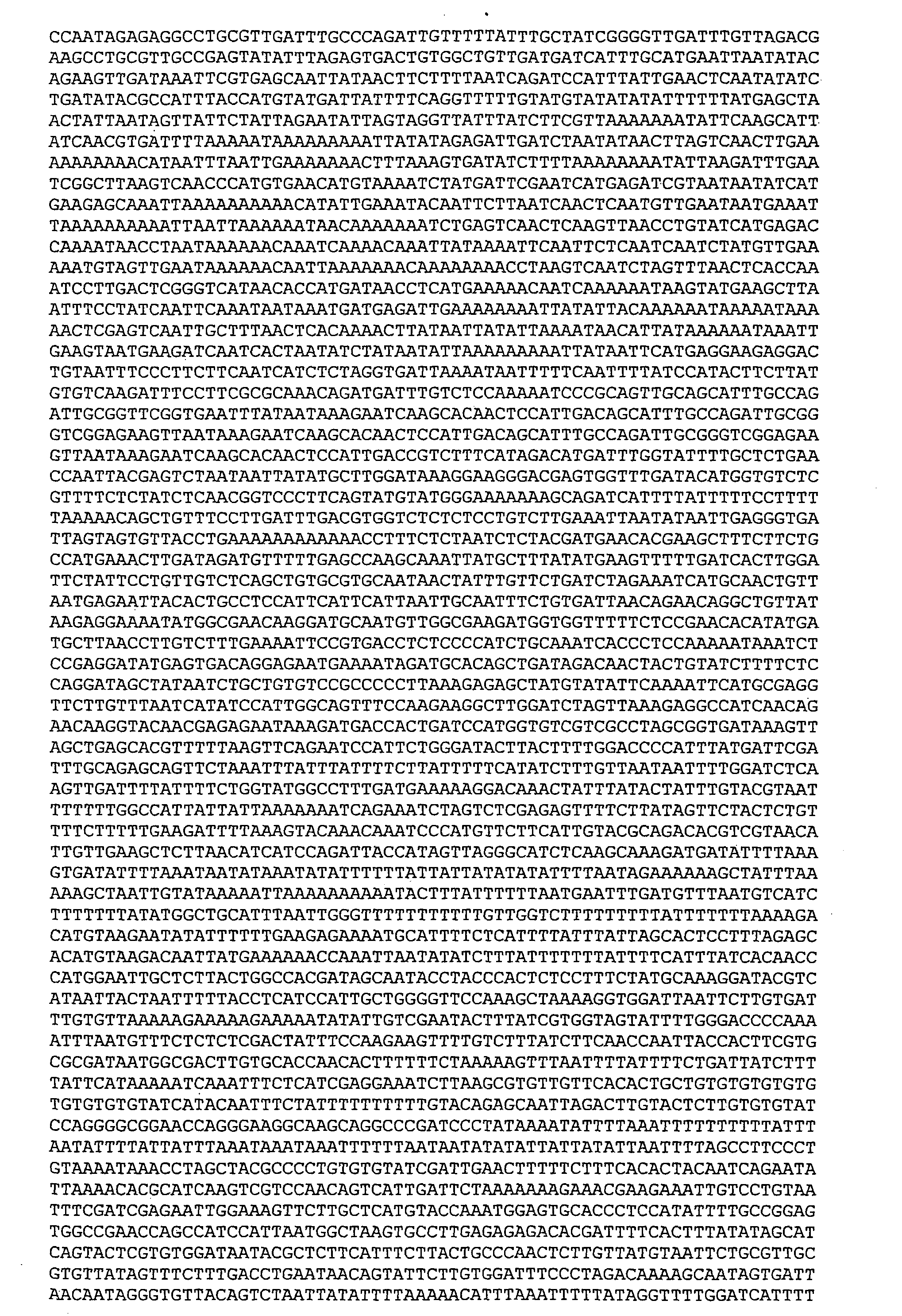Method for improving biomass yield
a biomass and yield technology, applied in the field of biomass yield improvement methods, can solve the problems of difficult mapping of genetic loci, high cost, and frequent phenotypic selection, and achieve the effects of improving yield, improving yield, and improving yield
- Summary
- Abstract
- Description
- Claims
- Application Information
AI Technical Summary
Benefits of technology
Problems solved by technology
Method used
Image
Examples
example 1
Plant Material
[0273]This study focuses on the K8 willow mapping population. This population comprises 947 full-sib individuals and was produced at Long Ashton Research Station (LARS), in 1999. The pedigree of the population is shown in Table 1.
[0274]The population was established in a field experiment at LARS in 2000 and later at Rothamsted Research (RRes), Harpenden, Herts, UK in 2003. Six clonal replicates of each K8 genotype were planted as single plots, each in a 2×3 arrangement within the field experiment. Plots were arranged in a 52×23 plot row by column design. To facilitate identification of any environmental inconsistencies across the trial site, and to allow subsequent adjustment of trait values prior to QTL analyses, a reference willow variety was planted at 64 pre-selected plot positions throughout the site. The biomass cultivar, S. viminalis var. Jorr, was selected for this role at the LARS site and the cultivar Bowles Hybrid was used at RRes. These control genotypes ...
example 2
[0320]Provided below is an example of the use of a diagnostic molecular marker derived from the QTL region that can be used to select for favourable alleles within a breeding programme:
[0321]A microsatellite marker was developed to screen for the three QTL alleles segregating in members of the K8 population of Salix. The microsatellite marker is amplified by PCR using the following pair of primers:
Forward primer5′-CAAAAACGCACCCTATTCTTCC-3′Reverse primer5′-CCAGAGTCCCCTTGAACACAC-3′
[0322]The sequence of the amplified region for allele A (179bp) is:
CAAAAACGCACCCTATTCTTCCCTATTTGCATCGCATTTGTTCTTGAATCTCTTTGTATTCCCTGAGTCTCAGAGAGAGAGAGAGAGAGAGAGAGAAGGAAAGAGAGAATGTTCCATACCAAGAAACCCTCAACTATGAATTCCCATGATAGACCCATGTGTGTTCAAGGGGACTCTGG
[0323]These primers generate amplicons of three different lengths in the K8 mapping population and thus are informative for the three alleles that are segregating in the yield QTL region. The female parent of the cross, cultivar ‘S3’ produces two alleles of different...
example 3
[0326]Disruption of Xyld7 gene sequence in QTL haplotype A
[0327]An alignment of Gene Xyld7 allele A (SEQ ID NO 2) sequence with the Gene Xyld7 allele C sequence (SEQ ID NO 1) (as shown in the alignment of FIG. 9D) indicates Gene Xyld7 allele A has an insertion region with extra nucleotides that are not present in Gene Xyld7 allele C sequence SEQ ID NO 1. SEQ ID NO 26 (as shown in FIG. 9E) shows the amino acid sequence of the Salix Xyld7 allele C polypeptide.
[0328]A comparison of Xyld7 gene sequences for both alleles of plant R13 (alleles A and C) identified an insertion in Xyld7_A allele which is not present in the Xyld_C allele sequence. To determine whether the insertion is in coding sequence, the transcript of allele C of this gene was fully sequenced which confirmed that the insertion in allele A is within exon 3 of the gene. The resulting allele A transcript, if expressed, would not be expected to encode a functional protein. Indeed, while both allele B and C transcripts have b...
PUM
| Property | Measurement | Unit |
|---|---|---|
| diameters | aaaaa | aaaaa |
| temperature | aaaaa | aaaaa |
| od | aaaaa | aaaaa |
Abstract
Description
Claims
Application Information
 Login to View More
Login to View More - R&D
- Intellectual Property
- Life Sciences
- Materials
- Tech Scout
- Unparalleled Data Quality
- Higher Quality Content
- 60% Fewer Hallucinations
Browse by: Latest US Patents, China's latest patents, Technical Efficacy Thesaurus, Application Domain, Technology Topic, Popular Technical Reports.
© 2025 PatSnap. All rights reserved.Legal|Privacy policy|Modern Slavery Act Transparency Statement|Sitemap|About US| Contact US: help@patsnap.com



